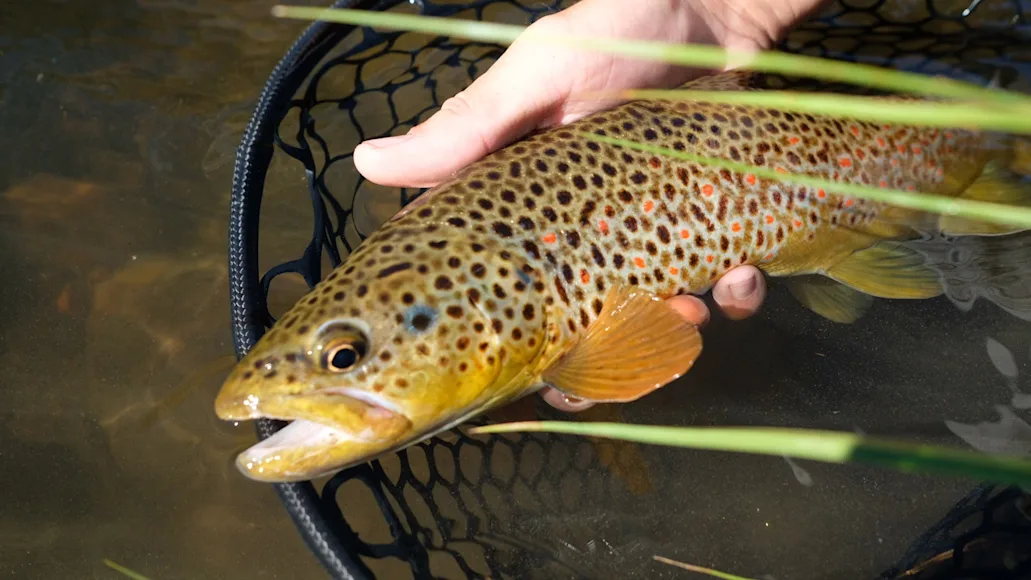_We may earn revenue from the products available on this page and participate in affiliate programs. Learn more ›
_
Any time you’re deciding which lure or fly to tie onto the end of your line, you are essentially asking, “What do trout eat?” And the better you are at answering that question, the more fish you will catch. It’s pretty much that simple, so let’s break it all down, starting with the trout itself.
High on the list of America’s favorite gamefish, trout exist in almost every state and can be found in both moving and still water. They have a reputation for being educated and snobby when it comes to deciding what to eat, though I don’t really believe that’s true. “Smart” is often confused with “focused” with these fish. Trout often get tunnel vision when feeding, refusing everything but the single, abundant food source at hand. This explains why one day you might catch a mess of them with a certain spoon, let’s say, and then the next three trips, they won’t touch it. They didn’t learn not to eat that spoon; they’re just too busy eating something else to care about the spoon for now.
Understanding the primary food sources that trout eat will help you make better decisions when choosing the best lures
or flies
cast in the lake or stream. It’s also worth noting that while I’m focusing on the habitats of wild trout, stocked trout that hold over for long periods of time will eventually lose interest in corn, marshmallows, and Power Bait, and begin feeding on these natural morsels, too. So, let’s answer that question: What do trout eat?
Table of Contents
Aquatic Insects
Baitfish
Crustaceans
Terrestrial Insects
Trout Eat Mostly Aquatic Insects
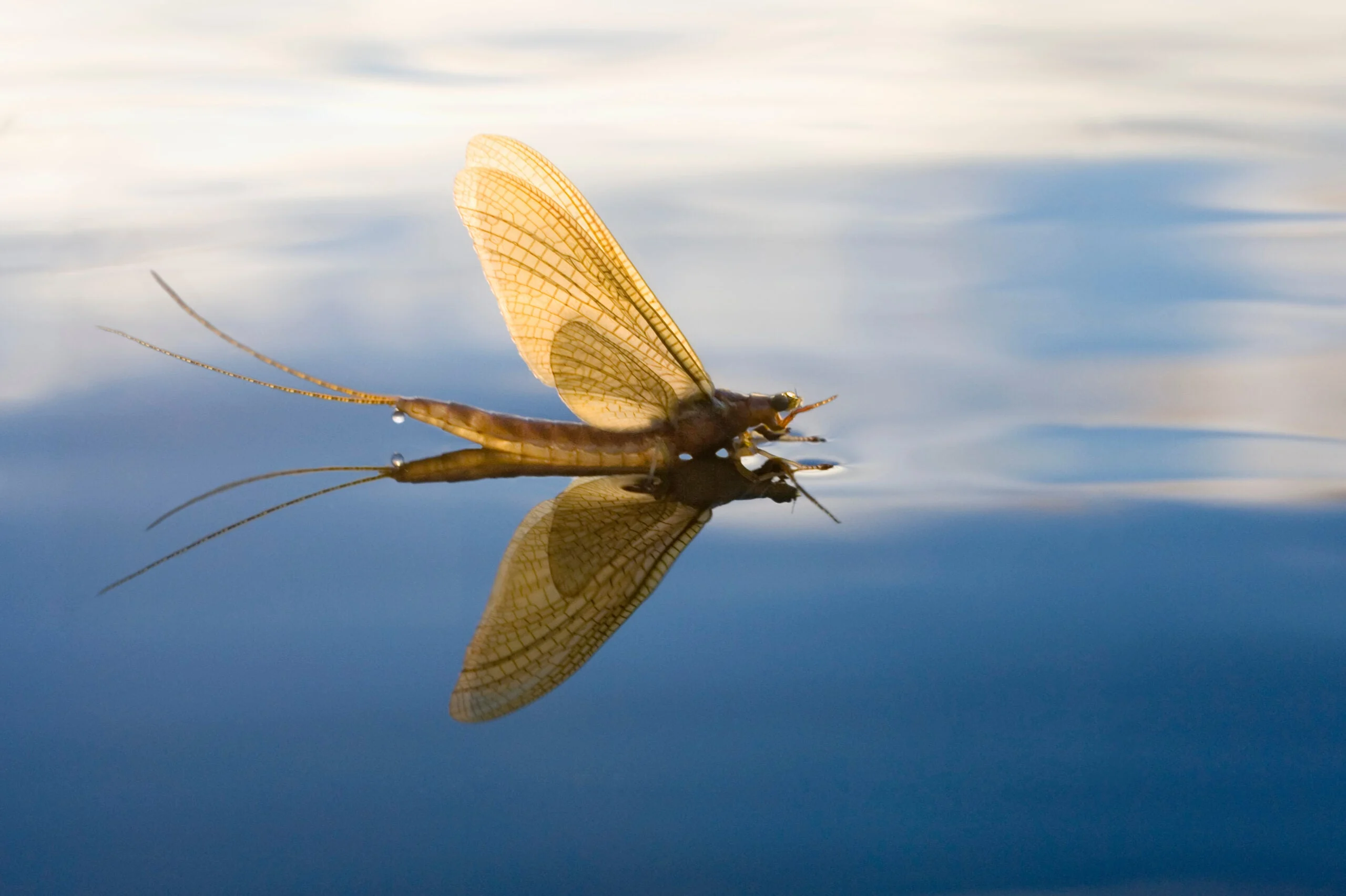
A freshly hatched mayfly rides the current downstream, waiting for its wings to dry. Jetta Productions / Adobe Stock
Whether talking about 6-inch wild brook trout in an Appalachian creek, a cutthroat trout in a high Rocky Mountain lake, or a giant brown trout
in northern Michigan, 90 percent of a trout’s diet consists of aquatic insects. Mayflies, stoneflies, and caddisflies are the three primary families of these water-borne bugs, and there are hundreds of species within each category. Practically every body of freshwater in the U.S.—whether it holds trout or not—experiences some form of aquatic insect hatch. Understanding that trout of all sizes rely on these tiny creatures for food, however, is both a blessing and a curse, depending on how you like to fish.
Aquatic insects hatch in the rocks, silt, or mud at the bottom of moving and still water. In their larval stages, they use their legs to cling to the stream bed and crawl around. They are, however, easily dislodged and set helplessly adrift in the current, which is when they get picked off by trout. It baffles some people that a 20-plus-inch brown trout would care to eat incredibly tiny larvae, but they’re so abundant and require little effort to grab that it’s the equivalent of us eating appetizers—one or two chicken wings isn’t filling you up, but a couple dozen will.

The fly pattern on the left imitates a winged insect riding on the surface, whereas the one on the right imitates a subsurface nymph. Umpqua
Eventually, aquatic insects swim or float to the surface, and trout have another good opportunity to pick them off while they are still underwater. This is why one of the best times to fish a nymph
is just before or during the beginning stages of a hatch. The bugs that do make it to the surface shed their exoskeletons and float downstream as their wings dry before taking to the air, creating the classic hatch scenario, with trout sipping bugs on top (though the number of winged bugs they eat in a season pales in comparison to the number of larval insects they consume below the surface). If you’re a fly fisherman, you have a leg up, as nymph patterns
do a terrific job of imitating larval aquatic insects. If you’re a spin fishermen, matching something so small can be tricky, though soft plastics like the Trout Magnet
in black, olive, or brown, and the Clay Bank Stone Fly
get you close enough to fool plenty of trout.
Baitfish Are Always on the Menu

This brown trout opened its big maw for a streamer fly. Joe Cermele
All trout are predators that will chase down and consume smaller fish. “Smaller,” of course, is a relative term. In a little cutthroat stream, they might be eating baitfish that measure less than a half-inch; in Arkansas’s White River, as an example, a 5-pound brown might take a shot at a 10-inch rainbow trout
. It’s your job to determine the size of the baitfish imitation you need based on the size of the trout in your water, or if you want to hunt down just one big fish or catch a pile of smaller ones.
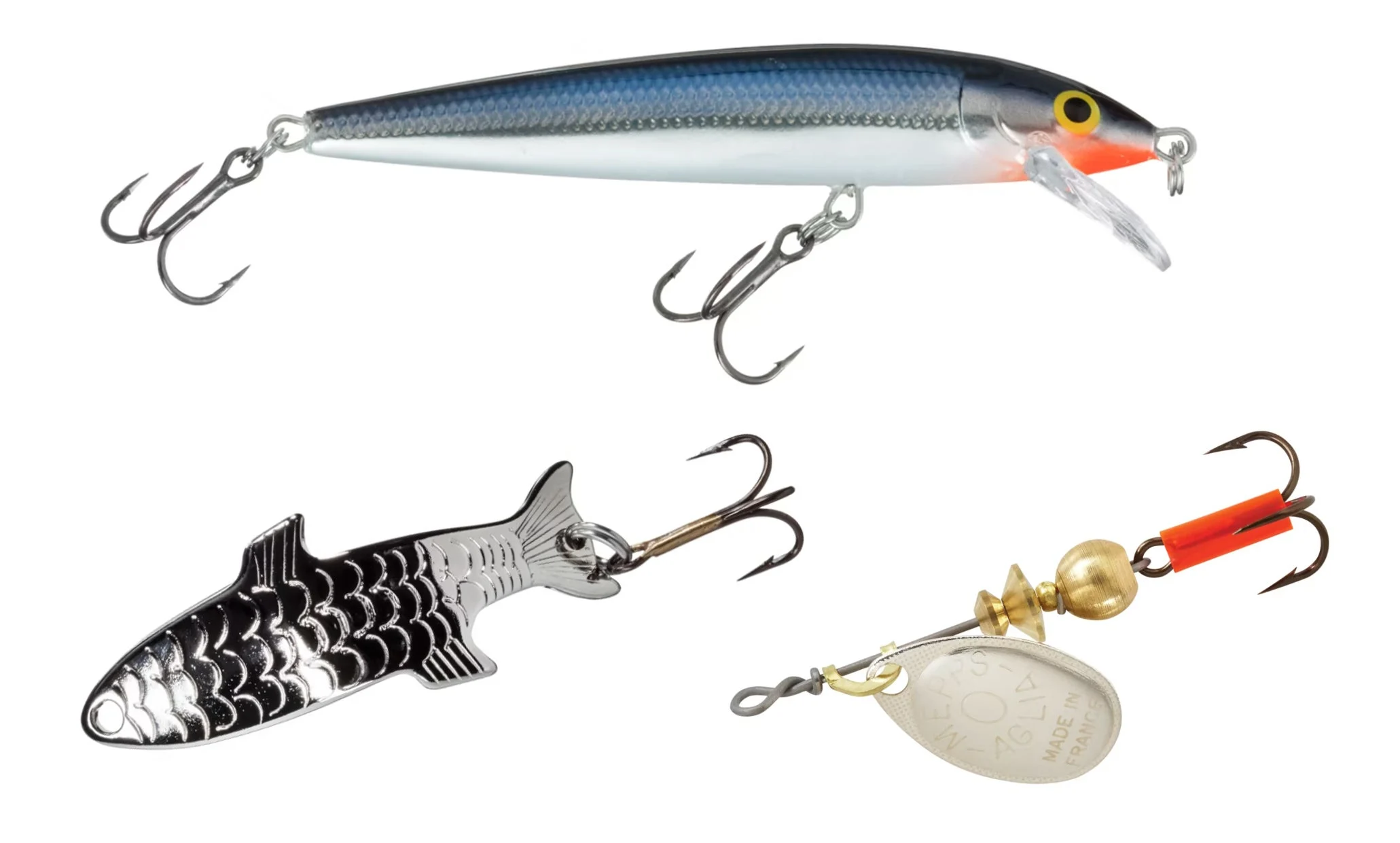
Clockwise from top: Rapala’s Husky Jerk Minnow, Mepps’ Aglia in-line spinner, and Acme’s Phoebe spoon all imitate baitfish that trout eat. Bass Pro Shops
and lures like inline spinners
, spoons
, and swimbaits
are available in a wide variety of sizes, and they’re all designed to mirror baitfish in action and color. Keep in mind, though, that trout—wild ones especially—must be in the mood to chase a moving target. If there’s a bug hatch going on, they can be so focused on that food source that they’re not going to move on a passing baitfish. Conversely, when the water is high or stained or too cold for aquatic insects to hatch, lures and flies that imitate baitfish can produce fiery results.
Trout Will Clobber Crustaceans
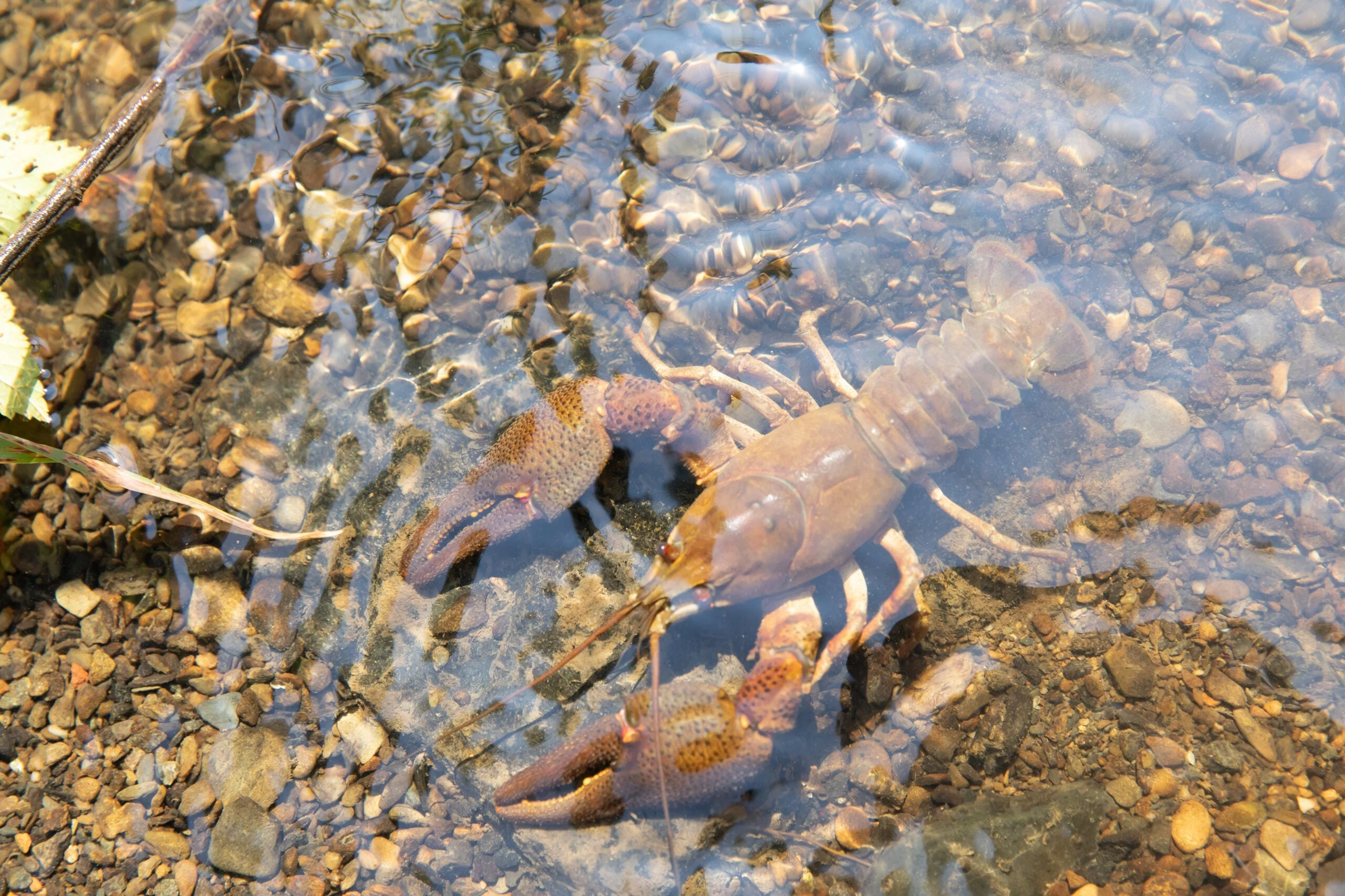
Big trout, especially, gobble up crayfish whenever they have the opportunity. rades / Adobe Stock
The two primary crustaceans that trout eat are crayfish
and scuds. Neither of these are primary food sources, but there are times within the season when trout dial in on them. In winter, scuds—which are tiny freshwater shrimp
—continue to thrive, especially in limestone streams or tailwaters that remain warmer during the cold months. Although trout eat them year-round, scuds are often the most readily available food source in winter. These tiny crustaceans are not easy to mimic with conventional gear, there’s no shortage of scud patterns
on the market for fly anglers.
Crayfish are somewhat of a “sleeper” food in the trout game, though make no mistake, trout gobble them up if they get the opportunity. I’ve had the most success with crayfish-imitating lures
and flies
in the late fall. In much of the country, bug hatches are waning this time of year, and big trout are looking for high-protein meals as the water starts cooling off.
Trout Eat Terrestrial Insects
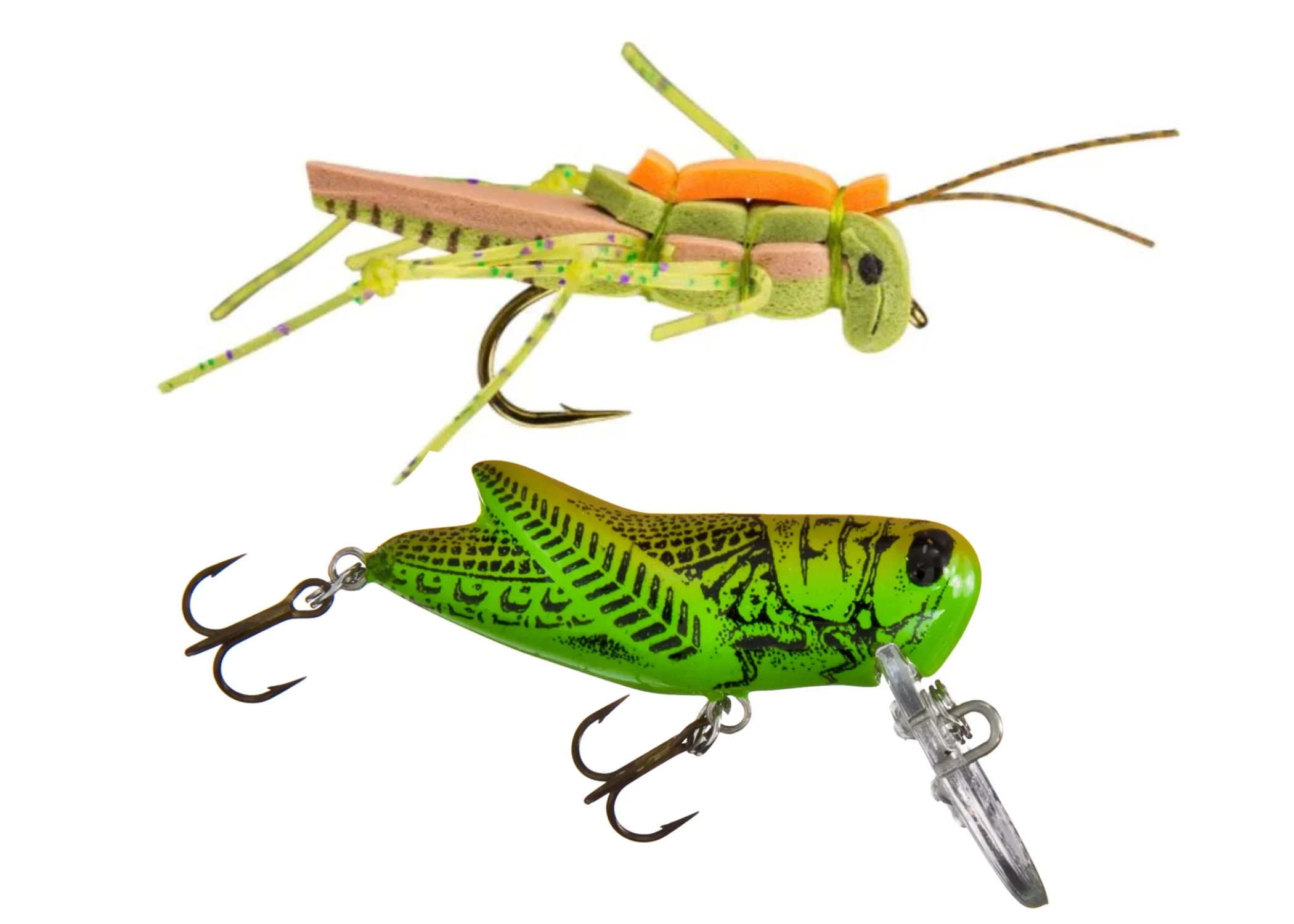
Grasshoppers are easy to imitate whether you are using fly or spinning gear. RIO and Bass Pro
Terrestrial insects are land-based insects like beetles, ants, and grasshoppers. For the sake of this story, I’ll also add worms to the mix even though they’re not technically insects. When any of these land-based critters ends up in the water, it’ll quickly become trout food. That said, terrestrials make up a small percentage of a trout’s diet, as they tend to be more of a surprise treat than a steady food source that can be relied upon daily.
Once again, fly fishermen have an advantage when trout are chowing land bugs, as there are loads of grasshopper
, beetle
, and ant
patterns they can naturally drift down a river. If you happen to be out West and are spinfishing for trout
during an afternoon when grasshoppers are falling in the river left and right, the Rebel Crickhopper
should score you a bite or three.
FAQs
Q: Do trout eat their own kind?
Yes, trout are predatory fish and will eat a number of smaller baitfish, including other trout. Brown trout are especially agressive and will target smaller brown, brook, and rainbow trout.
Q: What do trout feed on the most?
Trout mostly feed on acquatic insects such as mayflies, caddisflies, and stoneflies. Depending on the time of year they will also feed on baitfish, crustaceans, and other small terrestrial insects.
Q: Are trout aggressive?
Yes, trout are an extremely aggressive predatory fish species. They have a number of food sources and will even attack mice on the surface and other fish underneath.

